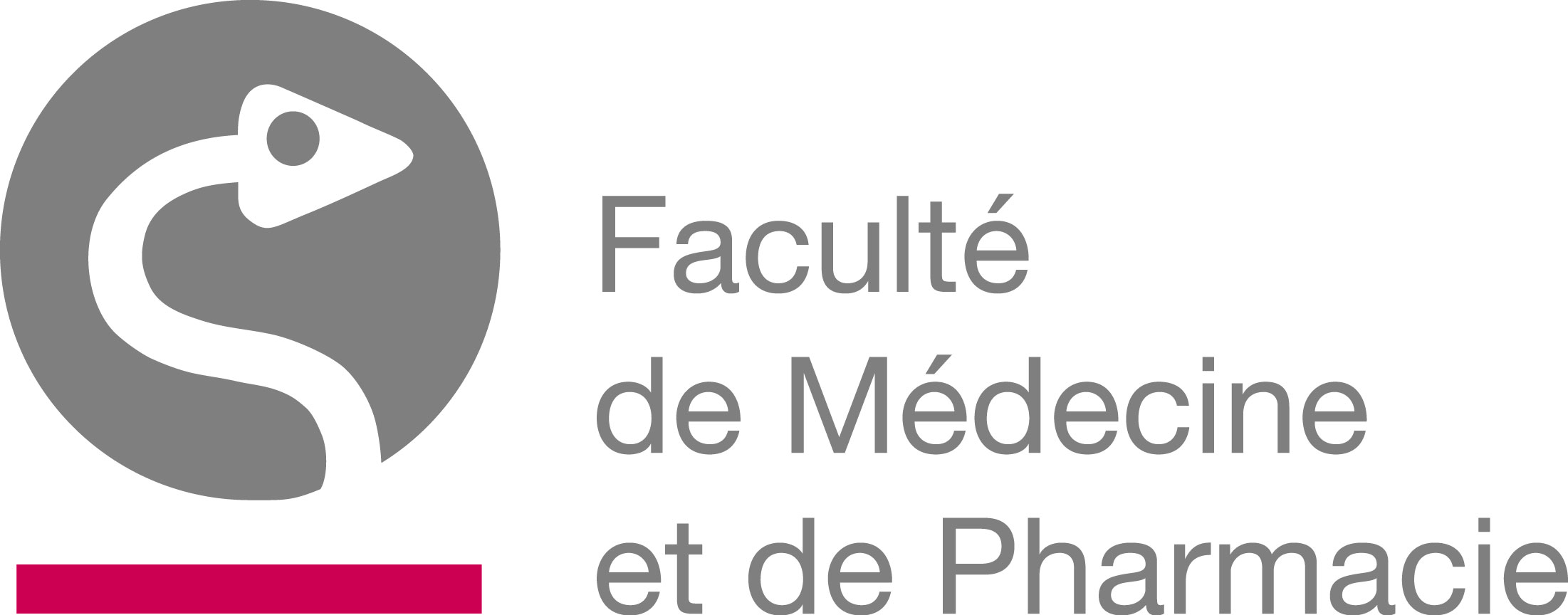 | Study programme 2020-2021 | Français | |
 | Medical Semiology and Teachings I | ||
Programme component of Bachelor's in Medicine à la Faculty of Medicine and Pharmacy |
| Students are asked to consult the ECTS course descriptions for each learning activity (AA) to know what special Covid-19 assessment methods are possibly planned for the end of Q3 |
|---|
| Code | Type | Head of UE | Department’s contact details | Teacher(s) |
|---|---|---|---|---|
| UM-B3-MEDECI-001-M | Compulsory UE | VANPEE Dominique | M109 - Sémiologie et Médecine générale |
|
| Language of instruction | Language of assessment | HT(*) | HTPE(*) | HTPS(*) | HR(*) | HD(*) | Credits | Weighting | Term |
|---|---|---|---|---|---|---|---|---|---|
| Français | 40 | 5 | 0 | 0 | 0 | 5 | 5.00 | 1st term |
| AA Code | Teaching Activity (AA) | HT(*) | HTPE(*) | HTPS(*) | HR(*) | HD(*) | Term | Weighting |
|---|---|---|---|---|---|---|---|---|
| M-SEMI-301 | Medical Semiology I | 40 | 0 | 0 | 0 | 0 | Q1 | |
| M-SEMI-303 | Clinical Reasoning and Cardiorespiratory Intensive Care Exercises | 0 | 5 | 0 | 0 | 0 | Q1 |
| Programme component | ||
|---|---|---|
 | UM-B2-MEDECI-016-M Introduction to Medical Semiology and Teachings | |
Objectives of Programme's Learning Outcomes
- Describe, organise, analyse and prioritise the phenomena observed in the medical field
- Understand the expression of biological realities in absolute or relative terms, the orders of magnitude, proportions and probability
- Know the standard physical examination, as well as recognise and describe clinical symptoms
- Control the molecular, morphological and functional approaches of normal and pathological conditions
- Integrate concepts from these different approaches in a complex biomedical problem
- Explain the relationships between molecular, morphological and functional changes and pathological conditions, their clinical signs and symptoms
- Demonstrate interpersonal skills developed within a medical context
- Summarise, explain, and argue
- Develop reasoning skills
- Understand and apply the basic principles of reasoning (obtaining data, analysis, synthesis, comparison, the rule of three, syllogism, analogy, Boolean logic, etc.)
- Understand and apply Bayesian inference
- Use a hypothesis in inductive, deductive or abductive reasoning
- Integrate reasoning in clinical approaches
- Manage doubt and uncertainty
- Manage resources
- Prioritise
- Manage their studies
- Have developed an interest for medicine
- Locate scientific information efficiently
- Read, interpret, and critique a scientific article
- Be a responsible practitioner
- Base reasoning on the data taken from scientific literature (evidence-based-medicine)
- Integrate a human dimension in their approach to the patient
Learning Outcomes of UE
At the end of the learning process (3 modules from end of year 2 to end of year 3 of the Bachelor), Students will have acquired needed basis for patient-clinical approach including knowledge of the main principles of medical anamnesis, clinical examination, diagnostic hypotheses elaboration and differential diagnostic.
The cursus will focus on the manifestations of diseases and on the physiological systems in a patient global-approach philosophy.
Content of UE
Objectives of the course include study of clinical signs and symptoms needed to understand pathophysiology and to elaborate diagnostics which is the key-step in order to initiate therapeutics.
Listen to and examine a patient is the very essence of the patient-physician relationship.
Prior Experience
Anatomy and hysiology
Type of Assessment for UE in Q1
- Oral examination
- Written examination
- Graded tests
Q1 UE Assessment Comments
oral or written depending on the number of students
Type of Assessment for UE in Q3
- Oral examination
- Written examination
- Graded tests
Q3 UE Assessment Comments
oral or written depending on the number of students
Type of Resit Assessment for UE in Q1 (BAB1)
- N/A
Q1 UE Resit Assessment Comments (BAB1)
Not applicable
Type of Teaching Activity/Activities
| AA | Type of Teaching Activity/Activities |
|---|---|
| M-SEMI-301 |
|
| M-SEMI-303 |
|
Mode of delivery
| AA | Mode of delivery |
|---|---|
| M-SEMI-301 |
|
| M-SEMI-303 |
|
Required Reading
| AA | |
|---|---|
| M-SEMI-301 | |
| M-SEMI-303 |
Required Learning Resources/Tools
| AA | Required Learning Resources/Tools |
|---|---|
| M-SEMI-301 | Not applicable |
| M-SEMI-303 | Not applicable |
Recommended Reading
| AA | |
|---|---|
| M-SEMI-301 | |
| M-SEMI-303 |
Recommended Learning Resources/Tools
| AA | Recommended Learning Resources/Tools |
|---|---|
| M-SEMI-301 | Not applicable |
| M-SEMI-303 | Not applicable |
Other Recommended Reading
| AA | Other Recommended Reading |
|---|---|
| M-SEMI-301 | Arlet, P., Arlet, J.-B., Astudillo, L., & Sailler, L. (2007). Eléments de sémiologie clinique et biologique (Ellipses). Paris. Ferri, F. F. (2012). Netter Patient Advisor (Elsevier S). Philadelphia. Munro, J. F., & Campbell, I. W. (2001). Sémiologie clinique (Maloine). Paris. |
| M-SEMI-303 | Not applicable |